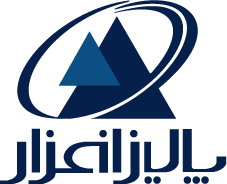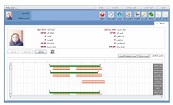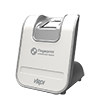The world of work has evolved significantly, with remote work emerging as a mainstream trend. This shift has introduced unique challenges for organizations, particularly in managing attendance, tracking work hours, and ensuring security through access control systems. Modern smart attendance devices play a vital role in addressing these challenges by leveraging advanced technologies such as facial recognition, biometric authentication, and cloud-based tracking.
The Rise of Remote Work
Remote work has grown exponentially due to technological advancements and the global adoption of flexible work policies. Companies now focus on maintaining productivity while accommodating employees working from home or other locations.
Challenges in Monitoring Remote Employees
- Lack of transparency in work hours.
- Difficulties in tracking attendance.
- Ensuring fair and accurate compensation for hours worked.
- Securing confidential data and ensuring compliance.
Smart Attendance Solutions: A Game-Changer
Smart attendance systems and access control devices have transformed traditional methods of employee monitoring. These technologies enable seamless tracking of employee presence, even in remote setups.
Key Features of Smart Attendance Devices
- Biometric Authentication: Using fingerprints, facial recognition, or iris scanning ensures secure and accurate attendance tracking.
- Cloud Integration: Allows real-time data storage and retrieval, making it easy for HR to monitor remote employees.
- Geolocation Tracking: GPS-enabled systems ensure employees clock in from authorized locations.
- Contactless Technology: Ideal for pandemic scenarios, these systems promote hygiene through facial recognition and proximity card readers.
Types of Smart Attendance Devices
- Facial Recognition Systems: Highly accurate, even in remote work conditions. Some devices can recognize faces even with masks, ensuring compliance with safety protocols.
- Fingerprint-Based Systems: Popular for on-site setups, these systems offer unmatched accuracy for secure workplaces.
- Mobile Attendance Apps: These apps integrate seamlessly with smartphones, enabling employees to check in from anywhere with geolocation verification.
- Hybrid Systems: Devices like Tiam Pro combine facial recognition, fingerprint scanning, and Wi-Fi connectivity, making them ideal for industrial and remote environments.
How Smart Attendance Works in Remote Settings
- Login through Mobile Apps: Employees log in using their credentials or biometric verification.
- Geofencing: Attendance is validated only within pre-defined zones, such as a home office or co-working space.
- Cloud-Based Reporting: Managers access real-time reports to evaluate employee availability and productivity.
- Integration with Payroll Systems: Automatically calculates wages based on logged hours, minimizing manual errors.
Choosing the Right Attendance System for Remote Work
When selecting a smart attendance device, consider:
- Accuracy: Opt for systems with advanced algorithms for precise recognition.
- Ease of Integration: Ensure compatibility with existing HR or payroll software.
- Scalability: Choose systems that can grow with your organization.
- Features: Devices like Tiam Pro offer dynamic recognition and seamless connectivity.
The Role of Access Control in Remote Work
Why Access Control Matters
Access control systems complement attendance devices by:
- Safeguarding sensitive data.
- Monitoring employee movements in hybrid setups.
- Enhancing compliance with company policies.
Advanced Access Control Features
- Multi-Factor Authentication: Combines Biometrics and passwords for added security.
- Cloud-Based Access Logs: Provides a comprehensive record of employee access.
- Customizable Permissions: Tailored access based on roles or projects.

Future Trends in Remote Work Attendance Systems
The future of attendance systems lies in integrating artificial intelligence, machine learning, and IoT. These innovations will enable predictive analytics, real-time monitoring, and enhanced decision-making for HR managers.
Emerging Technologies
- AI-Powered Analytics: Insights into employee productivity trends.
- IoT-Enabled Devices: Seamless interaction between smart devices and attendance systems.
- Blockchain: Secure and tamper-proof attendance records.
Conclusion
Smart attendance devices and access control systems are indispensable in today's remote work environment. By embracing these technologies, organizations can foster transparency, improve efficiency, and build trust with employees. As remote work continues to grow, investing in modern attendance solutions will be a strategic move for businesses worldwide.







































































